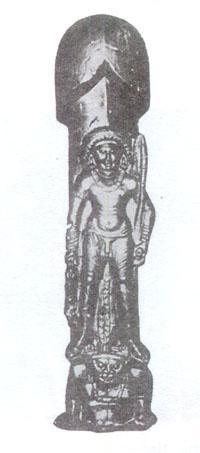 |
|
The
Gudimallam linga dated around 1st century B.C., believed to be the
oldest linga image of Shiva in India
|
Around the same time many poets began composing fabulous hymns to express their adoration of Shiva the god who mixed with high caste brahmins and low caste shudras alike. The first of these was the Tirumurai of the Nayanars, a Tamil work composed around 700 A.D. In these verses the caste hierarchy tht had dominated Indian society for centuries was attacked for the first time. Shiva was taken out of priesyly confinement and brought back to the people. This 'Shaiva-siddhanta' principle of Shiva, marked the beginning of the bhakti revolution, expressed itself through bhajans and kirtans. Shiva was no more the distant fearsome god; he was the lord of the masses, singing and dancing with them into ecstasy.
Under the leadership of various bhaktas, many other Shaivite schools emerged: Kashmir Shaivism under Vasugupta (800 A.D.) and Karnataki Lingayatism under egalitarian, all attempting to explain the Eternal Truth to the common man through the image of Shiva.
Shaivism spread far and wide, beyond Indian shores. With Tamil merchants its sacred lores reached Suvarnabhumi, the golden islands in South East Asia. In Shiva, or Siwa as they preferred to call him, the natives saw their paramount venerable teacher, Batara Guru. His tales were carved onto the walls of many exquisite temples like the one at Ankor Wat, built by the Khmer kings of Cambodia. He was the god of the east, bestower of rice and fortune, keeper of time, master of fate, who lived atop high mountain peaks with his consort, Uma.
As Shiva became more and more accessible, the desire to learn more about him, in human terms, increased. Bards could barely keep up with the demand and soon local tales were being adapted, edited and incorporated into Shaivite lore. All these were soon chronicled, between the 5th and 12th centuries A.D., in various Puranas. Shiva even appeared in later editions of popular epics like the Mahabharata and the Ramayana. In time, these tales that were quite amusing and uplifting, not to mention bawdy and racy, were being dramatized by playwrights. The great Kalidasa wrote Kumarasambhava, the conception of kartik, around the 4th century A.D. People loved it. the gods had come down to the people.